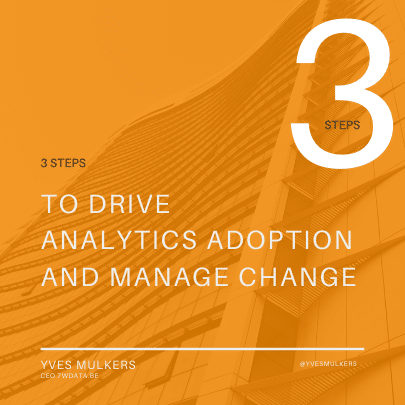How one CMO is leading a data-driven marketing transformation
- by 7wData

It’s one thing to want to be a data-driven marketing team, and quite another to make it a reality. But that’s what Kevin Ryder, VP of global marketing for Australian B2B software firm, IR, set out to accomplish when he joined the organisation in November 2013.
In announcing his appointment, the company tasked Ryder with the biggest marketing shake-up in IR’s 25-year history. These ambitions are part of a four-pillar, five-year strategic plan launched by IR CEO, Darc Rasmussen, aimed at driving growth.
To achieve this, Ryder has led a raft of transformative initiatives within and outside the marketing function, including a brand refresh, customer engagement programs, organisational and structural change, technology overhaul and wider collaborations with sales teams.
The glue binding these efforts together is data. According to Ryder, he’s employed a four-step process to transform the marketing function into a data-led one, a decision triggered by the need to better measure the impact of marketing activity in terms that are meaningful to the rest of the business, such as increased revenue and customer satisfaction.
“When I joined IR, I found it difficult to determine the success of our marketing programs as the data was not reliable, so a transformation was needed to address everything from the technology that we used through to the way that marketing engaged with the sales teams,” he told CMO.
As a first step, Ryder set himself the goal of having the right people in place and the data and technology-led foundations set before launching the new company brand, which took place 12 months later.
A key skillset needed was a detailed understanding of the way different marketing technology applications interact with each other, he said. For example, given the software business IR is in, the marketing automation system needed to communicate with the company’s CRM and licensing databases for a holistic customer view.
“Errors can be very costly, so I felt it was important to have these skills in-house,” Ryder explained.
As a result, IR recruited a marketing operations manager to manage marketing’s core and specialist applications, as well as be the liaison point with the IT department. New digital skillsets have also been brought into the team.
“The cloud has enabled us to be more agile and quickly try out new technology with minimal capital investment or impact on our internal IT,” Ryder continued. “Business unit ownership of technology is increasing but it is important we communicate with the central IT team and involve them in our decisions.”
Other technologies brought in to assist marketing have included social tracking software, analytics tools and personalisation capabilities. IR also invested in data cleansing initiatives and tools integration.
Sales alignment is another important component from an operational perspective, and the integration of customer management platforms has provided the foundation needed to bring marketing and sales even closer together, Ryder said.
As a result, IR could then deliver new and engaging content aligned to the buyer’s journey – a shift from technical specifications and stock library photos to storytelling using creative animation, he said.
In addition, it’s important to have a team that is “genuinely curious and eager to try out new and innovative ideas”, Ryder said. To foster this test-and-learn culture, IR has introduced agile methods to change how IR explores new marketing ideas.
“The team understands that if they don’t fail, they are not trying hard enough,” he added.
Helping Ryder obtain executive buy-in for the marketing overhaul, as well as investment into the platforms, analytics tools and personalisation technologies required to achieve this, has been a wider company culture driven by data.
“IR’s products are used to monitor and analyse millions of financial transactions and voice and video calls globally every day, so data-driven decision marking is a part of the DNA of the company and this applies to the way we run our own business as well,” he said.
“I have been able to get the investment required by linking it back to tangible outcomes. It also helps to have a CEO and board of directors that understands the value of marketing.”
[Social9_Share class=”s9-widget-wrapper”]
Upcoming Events
Shift Difficult Problems Left with Graph Analysis on Streaming Data
29 April 2024
12 PM ET – 1 PM ET
Read MoreCategories
You Might Be Interested In
Google and Apple WILL get into the car business
27 May, 2015Google’s self-driving prototype car presented during a demonstration at the Google campus in Mountain View, California. Technology giants Google …
It’s time for CEOs to focus on their proprietary algorithms, not just big data
27 Aug, 2015Big data is the oil of the 21st century. But for all of its value, data is inherently dumb. It …
Google Sheets Gets Analytics, Visualization Features
7 Jul, 2015Designed to enable users to do more with their data, the new features give users more options for visualizing …
Recent Jobs
Do You Want to Share Your Story?
Bring your insights on Data, Visualization, Innovation or Business Agility to our community. Let them learn from your experience.
Privacy Overview
Get the 3 STEPS
To Drive Analytics Adoption
And manage change




